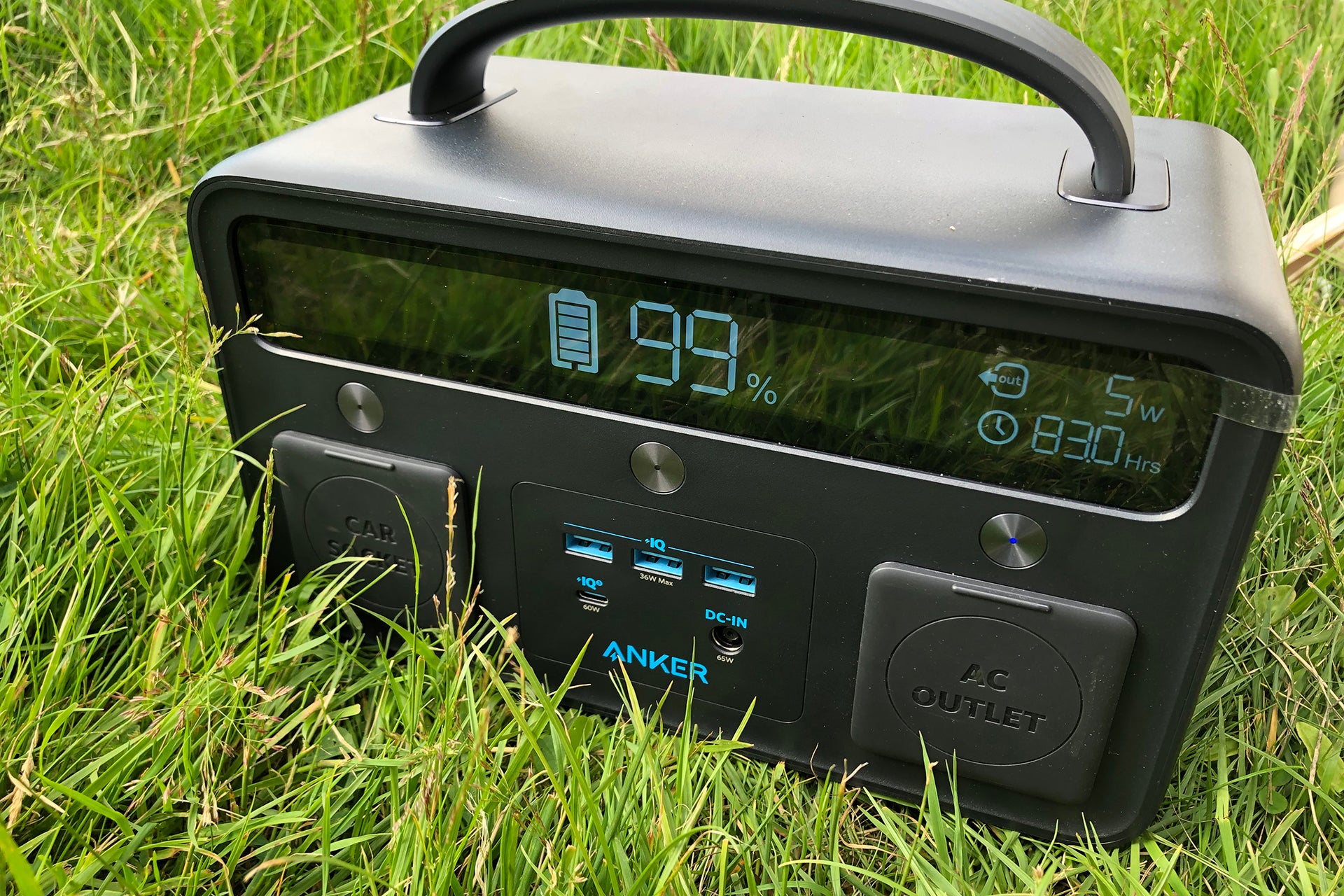Verdict
Huge and powerful, the Bluetti AC500 + B300S Home Battery Backup is a powerful backup system that can dish out a constant 5000W of power and can store up to 18,432Wh of power, depending on the battery packs you buy. As such, it’s quite expensive, but a good investment if you need reliable backup to power any appliance in your home.
Pros
- Huge power output
- Supports up to 18432Wh capacity
- Lots of outputs
Cons
- Very large
- Shows battery life as a percentage only
-
Battery capacityShips with 3042Wh battery, expandable up to 18,432Wh. -
Power outputSupports 5000W of power output.
Introduction
Portable power banks are nothing new, but most are relatively small devices, aimed at providing a bit of power on the move.
The Bluetti AC500 + B300S Home Battery Backup is different: this is a home-sized battery-backup system, delivering a minimum of 3072Wh, but going up to 18,432Wh through expansion packs.
With a 5000W output, it can handle any regular domestic appliance, too. For those that need a huge amount of off-grid power, this is a powerful and flexible solution.
Design and features
- Big and heavy
- Expandable battery packs
- Plenty of power outlets
More storage means more batteries and bigger sizes. Even so, I wasn’t quite prepared for how big the Bluetti AC500 + B300S Home Battery Backup is. It consists of two units. The AC500 is the inverter, which converts the DC power from the batteries into AC mains power. This alone weighs 30kg.
Then, there’s the B300S battery, which holds a massive 3072Wh of power, and weighs 36.1kg. That makes this system only portable for those with the biggest vehicles and, even then, you’ll want some kind of trolley to move everything around.
In total, up to six B300S batteries can be connected together to give a total of 18,432Wh, which is probably enough to power the average home for a couple of days. That is a lot of power.
The AC500 is connected to the B300S (or multiple B300S batteries) via dedicated chunky cables that plug into the side and screw into position.
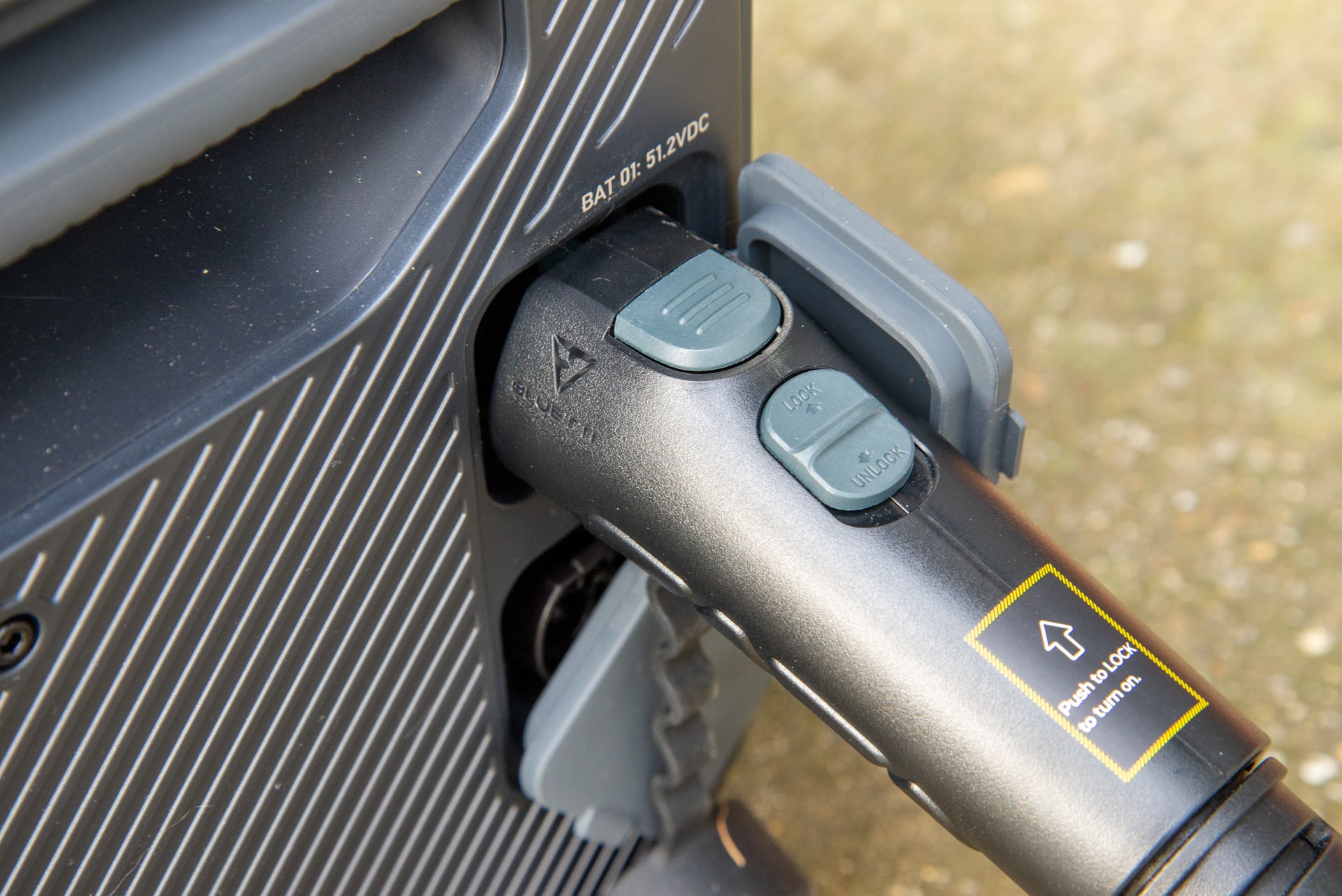
Most of the outlets are on the AC500. There are five 13A UK plugs, with the system able to output a total of 500W. That’s a huge amount of power: a kettle will top out at 3kW maximum, and that’s about the most demanding appliance that most people will use.
In other words, you can run pretty much a full house from this device with no limits. There’s a serge limit of 10,000W, so it’s really very hard to overload this system.
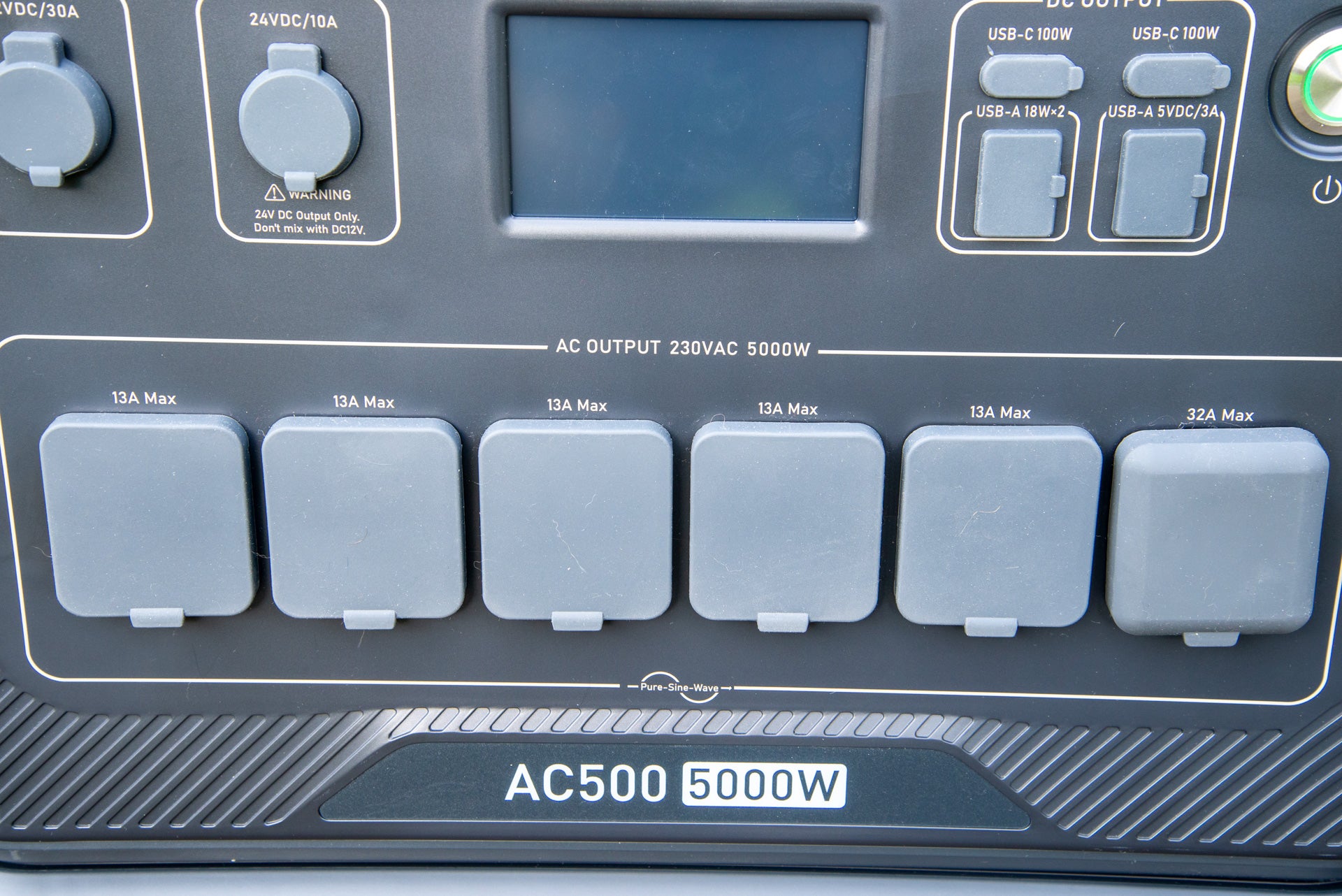
Other battery stations, such as the Jackery Explorer 1500 Pro, have lower limits and aren’t designed for this kind of whole home backup.
In addition to the standard outlets, there’s also a 32A outlet, which is designed for connecting the system as a grid-tied UPS; that is, letting the Bluetti AC500 + B300S Home Battery Backup take over your home’s power in the event of a power cut. In this case, the system does need to be designed and installed by a qualified electrician.
Otherwise, there are dual 100W USB-C power outlets, dual 18W USB-A sockets, and two 3A USB-A ports. Plus, there are two 15W wireless charging sockets on top for compatible smartphones.
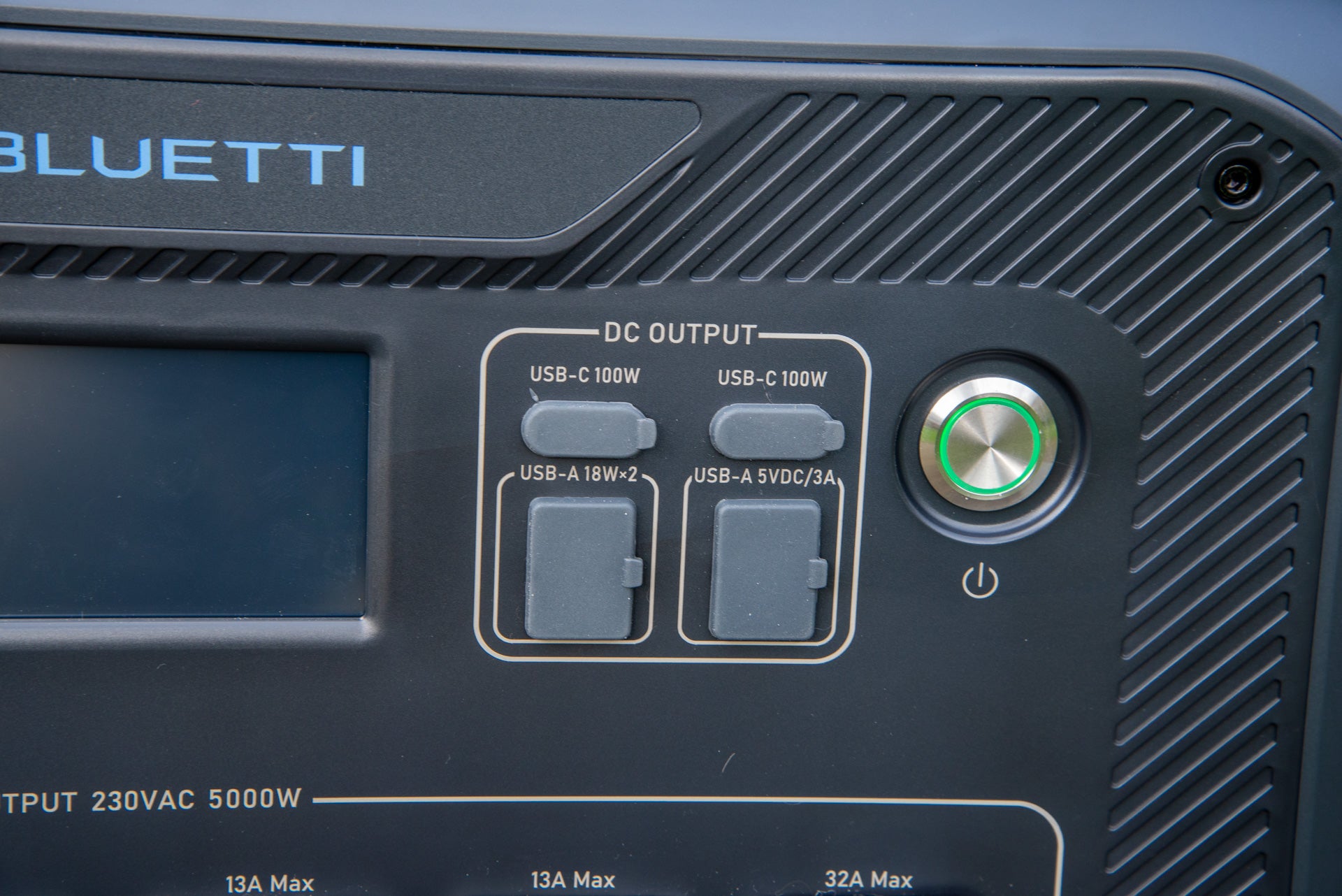
And, there are two car-style outlets, one 12V and one 24V.
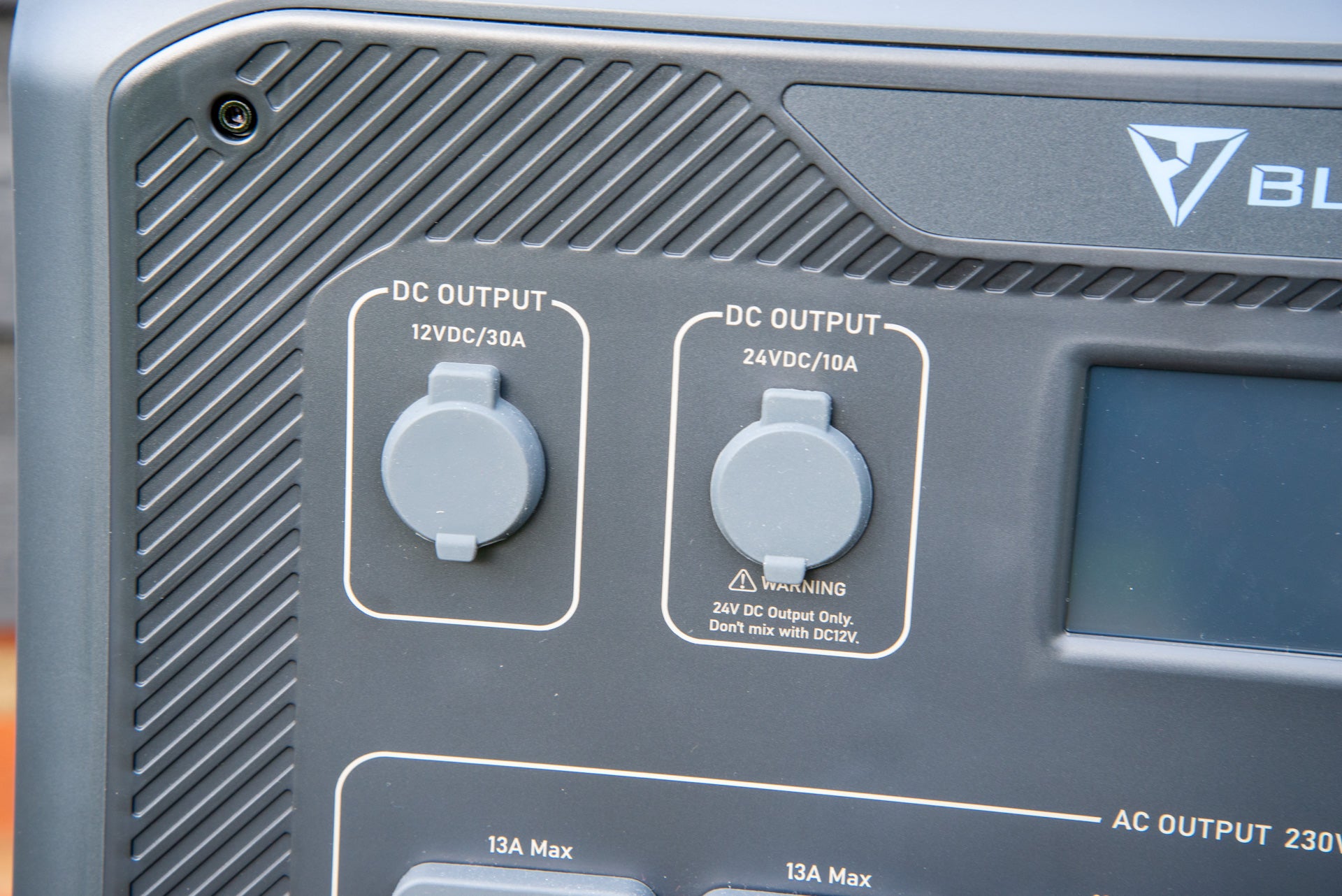
The BS300S adds additional ports: one 100W USB-C, one 18W USB-A, and one 12V car outlet.
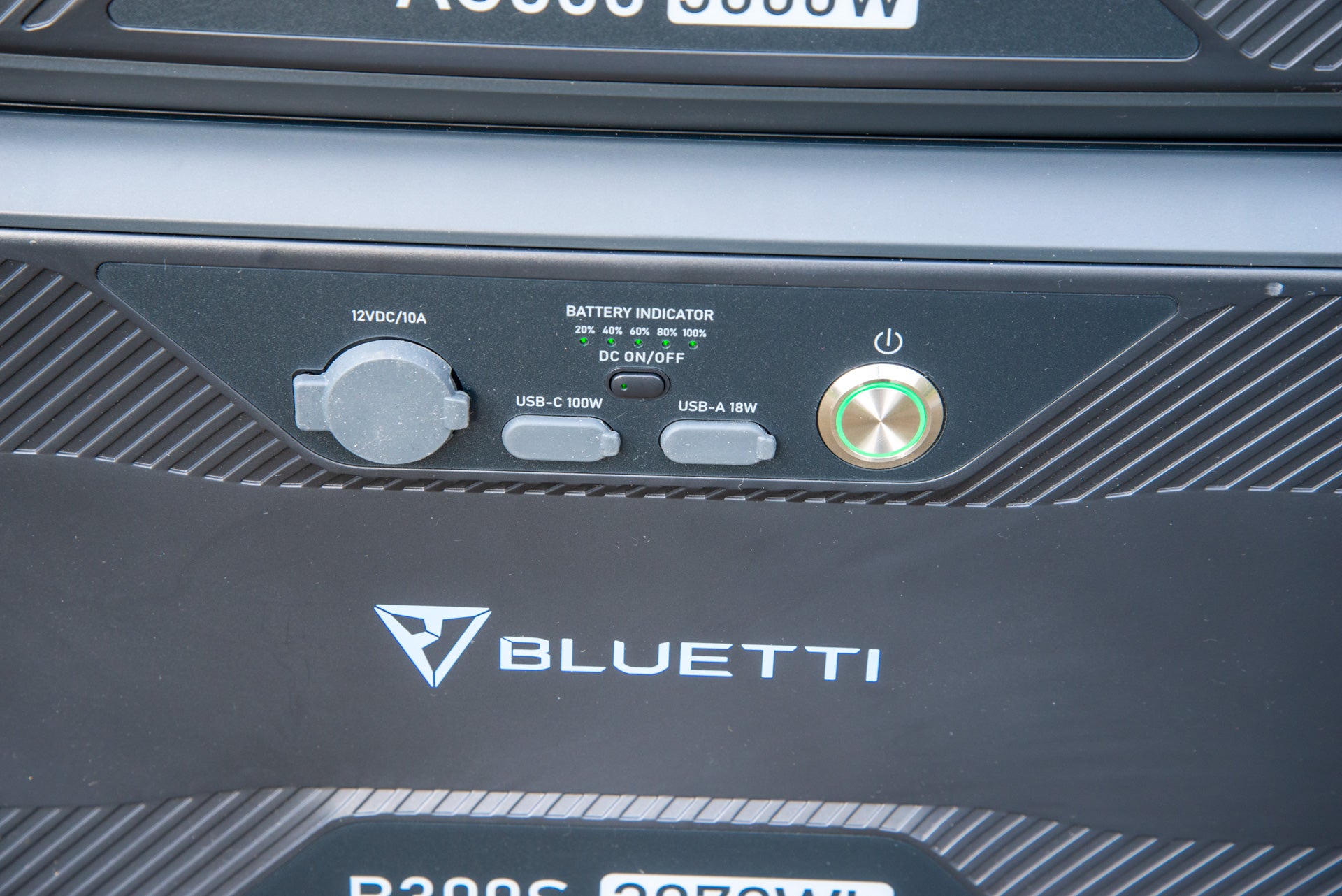
For charging, there’s a mains input, which runs at 15A by default (3.3kW), although the unit can be wired in professional to deliver up to 23A of power (5kW), although that requires using two B300S units.
There’s also solar panel support, for up to 3kW of power charging. Combined, that’s 8kW of input power, although this again requires two B300S units.
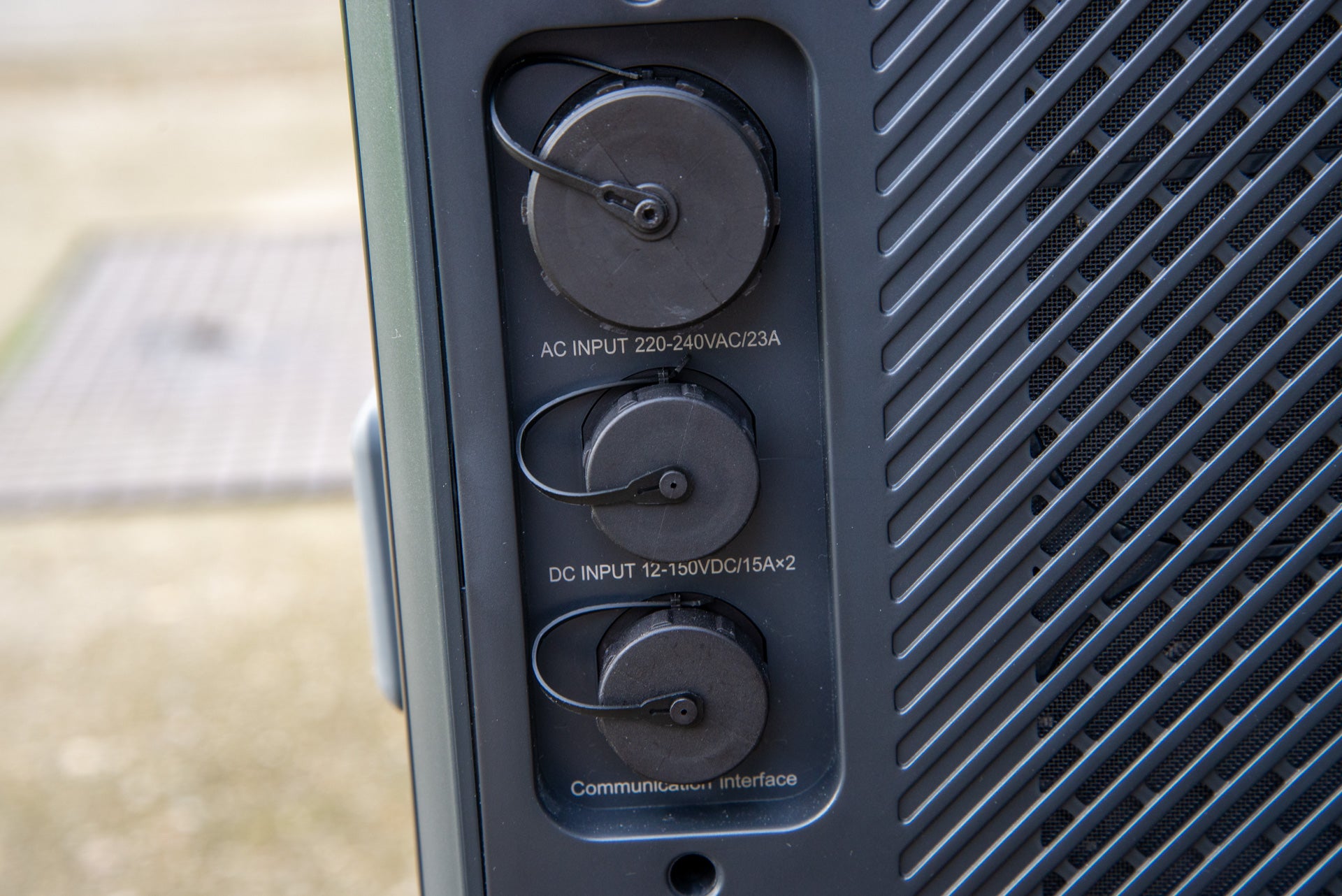
The system can be charged via a 12V input if required, although this will be slower.
There’s a main LCD screen, which shows the current load and current input values. This display only shows power remaining as a percentage, not as a time remaining, as you get on rival systems, such as the EcoFlow Delta 2.
Via the Settings menu, I could change the default settings, such as changing how the UPS settings work, and when the battery should auto failover. It’s also possible to set charging and discharging times (Time Control UPS mode), to use cheaper off-peak electricity rates.
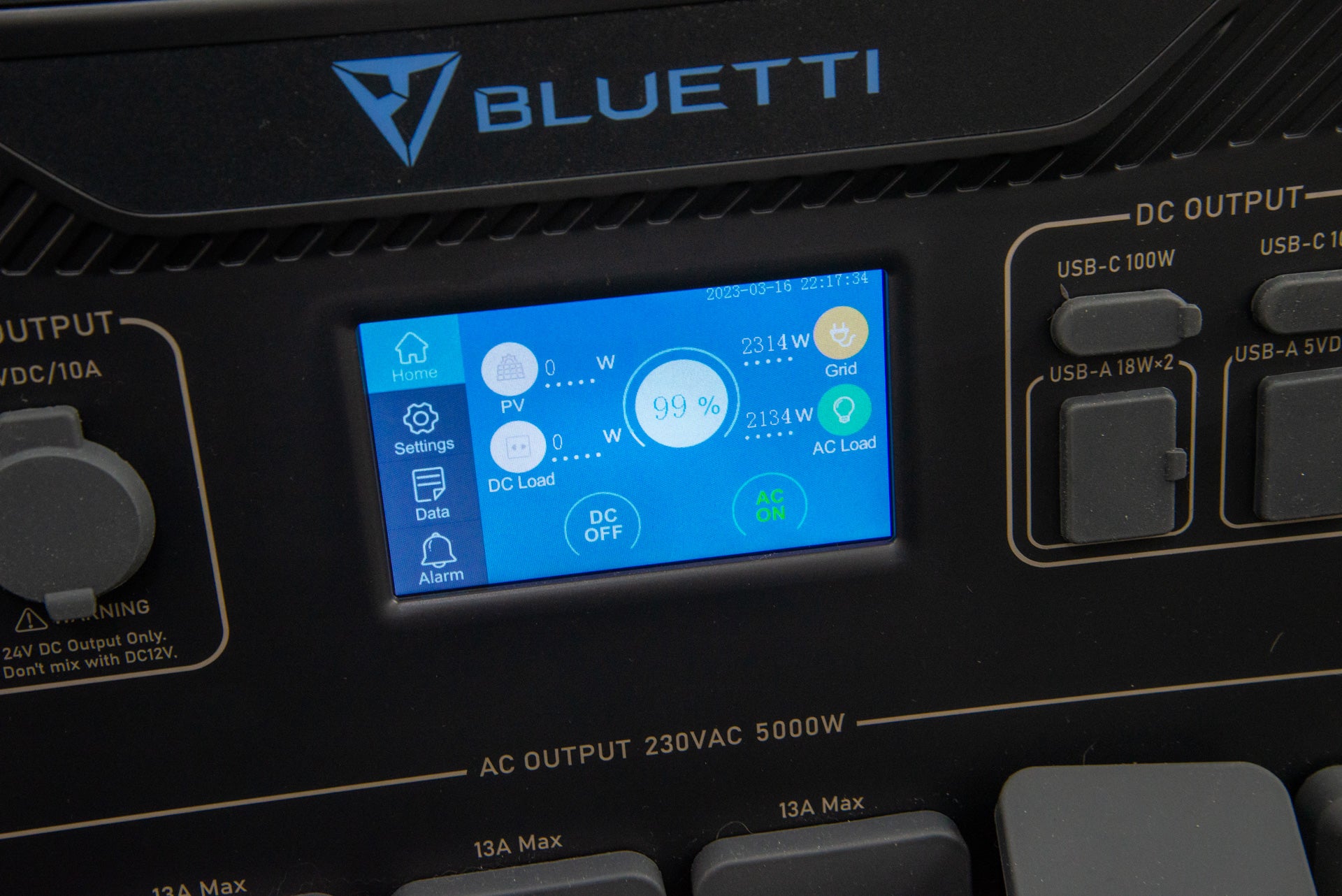
There’s a smart app, which can connect via Bluetooth or Wi-Fi. This shows the current charging rate, and also gives control over the banks of outputs (USB, DC and AC), letting me toggle them on and off automatically.
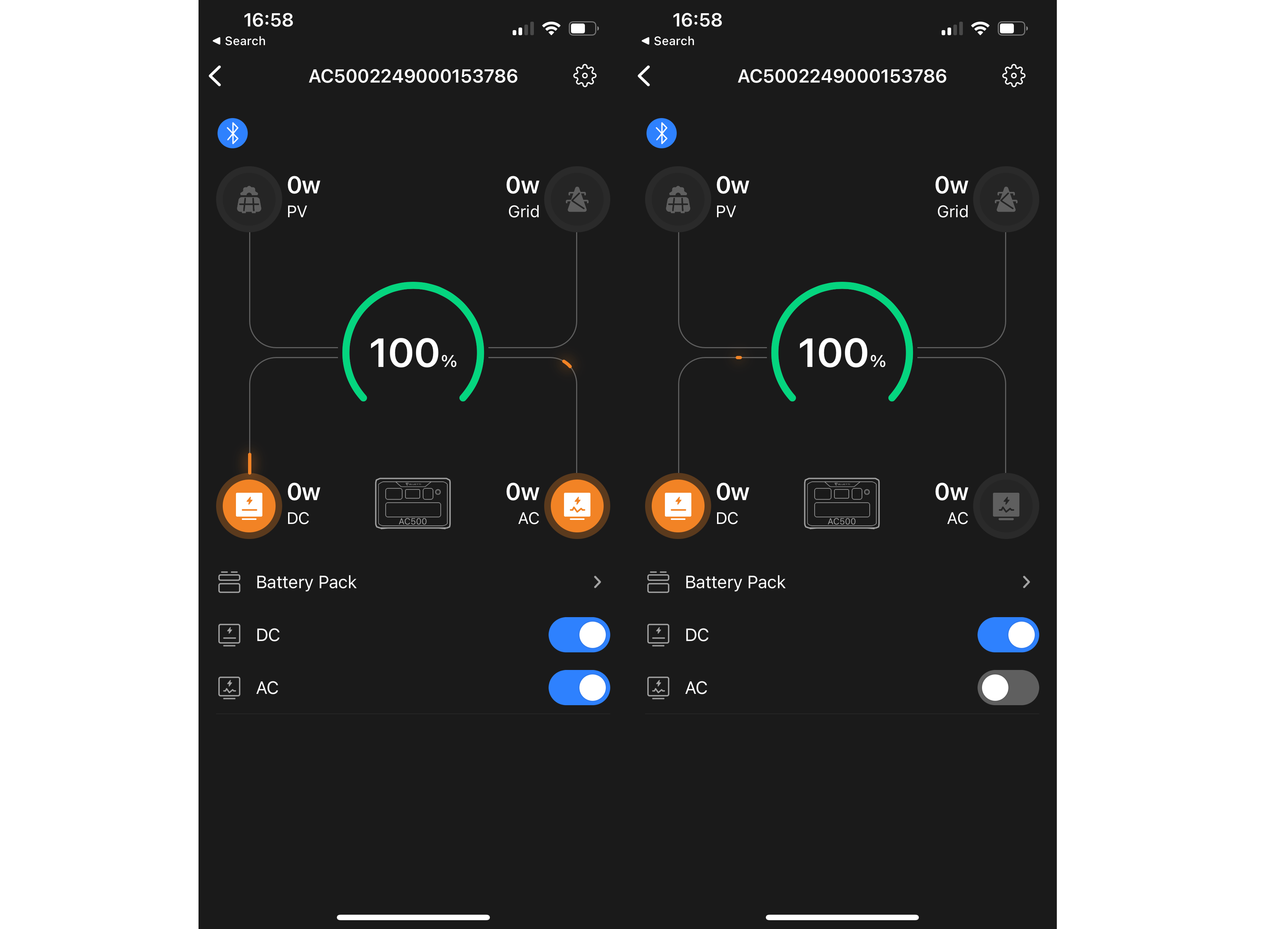
Charging
- Super-fast charging
- Supports high PV input
On mains power alone, the Bluetti AC500 + B300S Home Battery Backup can deliver a full charge in under 90 minutes. With the maximum solar panel input of 3000W, the system can charge in 90 minutes, which is impressive. This does, of course, require you to have maximum sunshine; on a rainy day in the UK, power is going to drop and you could take more than a day to fully charge this system.
Not to mention the cost. Adding four 420W solar panels costs £3984, and that delivers 1600W of power, so just over half the maximum input. In other words, what the Bluetti AC500 + B300S Home Battery Backup is specified to take is a lot more than the average owner will pay for.
Performance
- Handles anything
- Fast power switch over
- Handles 3500 charge cycles to 80%
The Bluetti AC500 + B300S Home Battery Backup can really handle anything at all. I plugged in a standard oven, and ran all of my normal tests, using the battery power, rather than mains power. This was absolutely no problem for this system.
On average, the system can run a standard fridge for three to four days, charge a laptop over one hundred times, smart phone a couple of hundred times and even run a powerful electric heater for at least an hour; lower-power heaters will run for a few hours. Even running an electric grill (1800W), there’s enough power for almost two hours of cooking. These are impressive metrics, and show that the Bluetti AC500 + B300S Home Battery Backup really is built to tackle typical household usage.
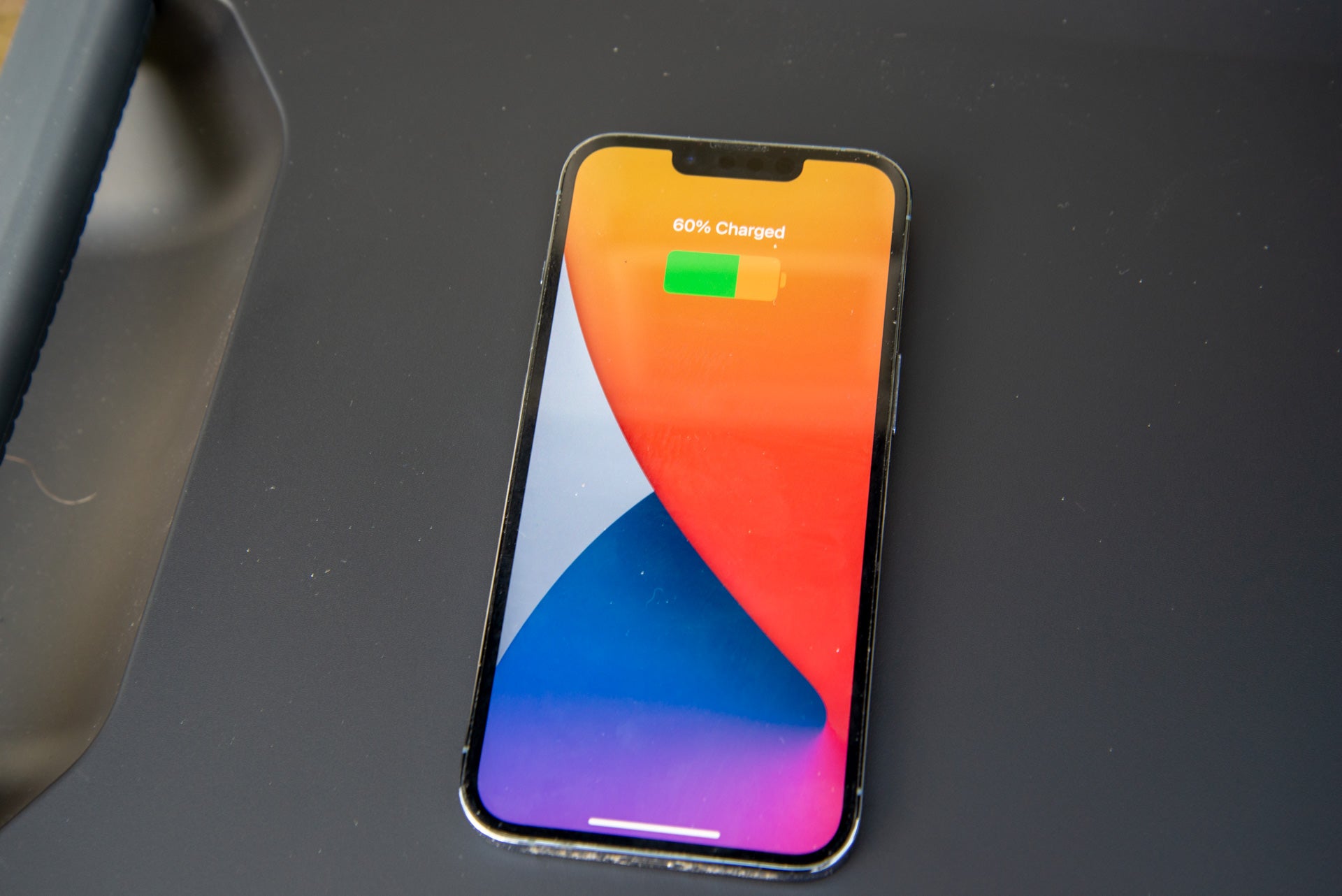
I tested the system as a UPS, unplugging it from the mains. Running a computer and projector at the same time, the switch-over was fast enough that neither lost power or even flickered. If you have an essential kit that you need to keep running, this system will do the job.
This system uses a LiFeP04 battery, rather than Li-ION. This newer technology has one main advantage: it lasts for more charge cycles. Battery life is quoted at the number of cycles it takes until the battery is at 80% of its initial charge. Here, that’s 3500 cycles.
To get an idea of value, we can work out that after 3500 cycles, the Bluetti AC500 + B300S Home Battery Backup would have stored 10,752kWh of power. At the current system price of £5499, it costs 51p to store each kW. Given a unit rate of 34p per kWh, it would cost around 85p to pay for the electricity to charge the unit and store it. That’s a little more expensive than the EcoFlow Delta 2’s running costs, although here, the Bluetti AC500 + B300S Home Battery Backup stores more power and has a far more expensive and powerful inverter. Plus, the price starts to drop with additional battery packs.
Go for a system with Li-ION batteries, such as the Jackery Explorer 1500 Pro, and the unit cost is more expensive: around £1.33 per kWh, due to fewer supported charging cycles.
Of course, after 3500 power cycles, the Bluetti AC500 + B300S Home Battery Backup will continue to work, just that capacity will continue to diminish. However, my figures compare like-for-like to get a rough idea of cost per kWh.
Latest deals
Should you buy it?
You need backup for your home’s power:
If you need a system that can power all of your appliances and provide power for up to a couple of days’ use, this is the system for you.
You want power on the go:
Although technically portable, this system is very bulky and heavy, and a smaller system will probably suit better.
Final Thoughts
It’s all really a matter of what you need. For the occasional camping trip, the EcoFlow Delta 2 or Jackery Explorer 1500 Pro will cater for most of your needs, and the devices are smaller and marginally easier to carry around.
If you need proper power backup for your home, with the capacity to give more than a day’s worth of power, and the output to handle every domestic appliance, there’s not much else like this model. For those that need home backup, this is a powerful choice that will last a long time; those looking for power on the go are better suited looking elsewhere.
How We Test
We test every power station we review thoroughly over an extended period of time. We use standard tests to compare features properly. We’ll always tell you what we find. We never, ever, accept money to review a product.
Find out more about how we test in our ethics policy.
We test with a variety of devices to see how long the battery will last.
We test different charging methods to see how quickly the battery can be topped up.
FAQs
Up to six B300S batteries can be connected for just over 18kWh of storage.
5000W, although the system will take up to 10,000W surge power.
Sustainability
TrustedReviews holds the fact that global warming is not a myth as a core value and will continuously endeavour to help protect our planet from harm in its business practice
As part of this mission, whenever we review a product, we send the company a series of questions to help us gauge and make transparent the impact the device has on the environment
We currently haven’t received answers to the questions on this product, but we will update this page the moment we do. You can see a detailed breakdown of the questions we ask and why in our sustainability info page.





















